#HistoryOfTechnology
Explore tagged Tumblr posts
Text







🎄💾🗓️ Day 8: Retrocomputing Advent Calendar - Commodore PET 🎄💾🗓️
The Commodore PET (Personal Electronic Transactor) came out in 1977 and was among the earliest personal computers - featuring an all-in-one design with a keyboard, monochrome monitor, and cassette deck - all within a single chassis. Powered by an MOS Technology 6502 microprocessor running at 1 MHz, it had 4 KB of RAM and was expandable up to 96 KB in later models. The PET had Commodore BASIC stored in ROM, allowing users to write and execute programs directly. Its display supported text resolutions of 40×25 or 80×25 characters, using the PETSCII character set for semigraphic capabilities. While early models did not have sound, later versions included a basic beeper. PET's all-in-one design and user-friendly interface contributed to its popularity in education and business, and it sold approximately 219,000 units before its discontinuation in 1982.
Check out the wikipedia page for some extended history and great photos -
Have first computer memories? Post’em up in the comments, or post yours on socialz’ and tag them #firstcomputer #retrocomputing – See you back here tomorrow!
#retrocomputing#commodorepet#adventcalendar#vintagecomputers#personalcomputing#techhistory#1977tech#earlycomputers#commodore6502#petscii#computermuseum#technostalgia#oldschooltech#computingpioneers#classiccomputers#80scomputers#historyoftechnology#microcomputers#cassettedeck#basicprogramming#educationtech#businesscomputing#earlypcdesign#retrodesign#geekculture#nostalgiatech#techofthepast#vintagetech#allinonedesign
259 notes
·
View notes
Text
Technological Bubbles in History: Lessons from TV, the Internet, and Bitcoin

Throughout history, groundbreaking innovations have often been accompanied by what we call "technological bubbles" — periods of rapid adoption, speculation, and societal transformation. While these bubbles may burst, leaving some early adopters disillusioned, they often lay the groundwork for revolutionary change. Bitcoin is one of today’s most debated innovations, often compared to these historical patterns. But what can past bubbles teach us about Bitcoin’s future?
What Are Technological Bubbles?
A technological bubble occurs when a groundbreaking innovation captures the imagination of society, spurring investment and adoption at a pace faster than the technology itself can mature. While this can lead to financial overvaluation and market corrections, these bubbles often mark the beginning of significant societal shifts.
Historical Examples
1. Television: From Novelty to Necessity When black-and-white televisions first hit the market, they were a luxury item for the wealthy. The novelty of owning a TV created a bubble of demand, as people clamored to be part of this new technological era.
Then came color televisions, a significant upgrade that created a second bubble within the original. Families who already had black-and-white TVs now wanted to upgrade, creating another surge in demand and investment. As color TVs became the norm, the original “black-and-white bubble” effectively popped, and TV shifted from a luxury to a household necessity. This cycle demonstrated how bubbles don’t destroy technology—they refine it for mass adoption.
2. The Internet: The Dot-Com Bubble The rise of the internet in the 1990s brought unprecedented excitement and investment. Companies with little more than a ".com" in their name were valued at billions, leading to the infamous dot-com crash of the early 2000s. While the bubble burst, it cleared the way for legitimate companies like Amazon and Google to flourish. The internet has since become an indispensable part of modern life, proving that the technology’s value was far greater than the hype of the bubble.
3. Social Media Platforms Early platforms like MySpace captured the world’s attention, creating a bubble of rapid growth and massive user adoption. But as newer platforms like Facebook and Twitter emerged, they burst the MySpace bubble. Today, social media continues to evolve, but the initial excitement and turbulence have normalized as it becomes ingrained in everyday communication.
The Mother of All Bubbles: Bitcoin
Bitcoin, much like these earlier technologies, is often labeled a bubble. Critics point to its volatile price cycles and speculative nature. However, history suggests that such patterns are not only normal but a necessary part of technological evolution.
Bitcoin’s early days were marked by skepticism, much like black-and-white TVs or early internet adoption. Today, it has entered the "color TV" phase—gaining mainstream attention and sparking new innovations, such as the Lightning Network and decentralized finance applications. Yet, the bubble analogy remains relevant. The rise of speculative tokens and unstable projects has created noise, similar to the dot-com era. Once these distractions fade, the foundational value of Bitcoin as a decentralized, incorruptible monetary system will likely endure.
Lessons from History
Adoption Phases: Each bubble follows a predictable cycle of skepticism, hype, correction, and mass adoption. Bitcoin’s price volatility reflects its place within this cycle.
Resilience Matters: Technologies that solve real-world problems, like the internet and television, survive their bubbles. Bitcoin’s ability to address issues like inflation, financial inclusion, and decentralized governance ensures its staying power.
Clearing the Path: Market corrections clear away unsustainable hype, allowing the true value of innovation to shine through. This has happened with TV, the internet, and social media, and it’s happening now with Bitcoin.
Closing Thoughts
Technological bubbles are not signs of failure but of transition. They mark the growing pains of innovations that challenge the status quo. Bitcoin is no exception. While skeptics may see its volatility as a flaw, history teaches us that such turbulence is often a precursor to lasting impact.
Is Bitcoin just another bubble, or is it the foundation of something much larger? The answer lies not in its current price swings but in the systemic change it is already inspiring. As history shows, every great technological leap begins with a bubble — but it’s what comes after the pop that truly changes the world.
Take Action Towards Financial Independence
If this article has sparked your interest in the transformative potential of Bitcoin, there's so much more to explore! Dive deeper into the world of financial independence and revolutionize your understanding of money by following my blog and subscribing to my YouTube channel.
🌐 Blog: Unplugged Financial Blog Stay updated with insightful articles, detailed analyses, and practical advice on navigating the evolving financial landscape. Learn about the history of money, the flaws in our current financial systems, and how Bitcoin can offer a path to a more secure and independent financial future.
📺 YouTube Channel: Unplugged Financial Subscribe to our YouTube channel for engaging video content that breaks down complex financial topics into easy-to-understand segments. From in-depth discussions on monetary policies to the latest trends in cryptocurrency, our videos will equip you with the knowledge you need to make informed financial decisions.
👍 Like, subscribe, and hit the notification bell to stay updated with our latest content. Whether you're a seasoned investor, a curious newcomer, or someone concerned about the future of your financial health, our community is here to support you on your journey to financial independence.
Support the Cause
If you enjoyed what you read and believe in the mission of spreading awareness about Bitcoin, I would greatly appreciate your support. Every little bit helps keep the content going and allows me to continue educating others about the future of finance.
Donate Bitcoin: bc1qpn98s4gtlvy686jne0sr8ccvfaxz646kk2tl8lu38zz4dvyyvflqgddylk
#Bitcoin#Cryptocurrency#FinancialRevolution#TechnologicalBubbles#Innovation#Decentralization#Blockchain#DigitalTransformation#HistoryOfTechnology#FutureOfMoney#TVHistory#InternetEvolution#DotComBubble#CryptoEducation#DigitalGold#CryptoBlog#BitcoinCommunity#MoneyRevolution#TechTrends#EconomicFreedom#financial empowerment#financial education#unplugged financial#globaleconomy#digitalcurrency#financial experts#finance
4 notes
·
View notes
Text

How the Telegraph Pioneered Communication http://dlvr.it/TM44Fx
0 notes
Text

How was the wheel invented? The unlikely birth of a world-changing technology nearly 6,000 years ago @us.theconversation.com (Plus- Leibnitz)
Roll along: https://roughlydaily.com/2025/07/01/we-must-not-forget-that-the-wheel-is-reinvented-so-often-because-it-is-a-very-good-idea/
#calculus#culture#davidparnas#gottfriedwilhelmleibniz#history#invention#isaacnewton#leibnitz#maths#math#mathematics#science#technology#wheel#historyoftechnology
1 note
·
View note
Text
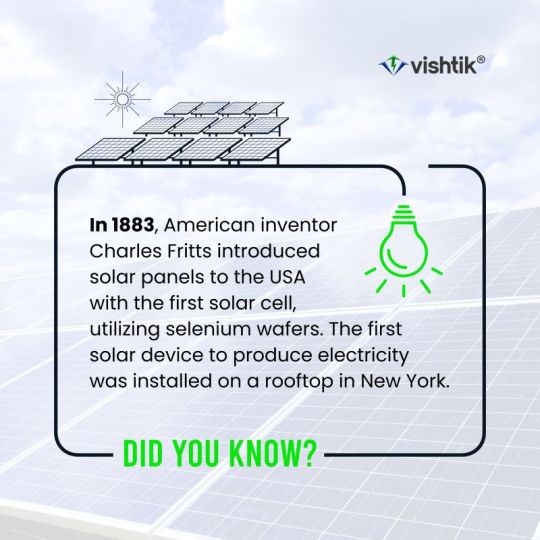
Follow Us for More Updates!
Sign Up Now: http://project.vishtik.com Call us: +1 (307) 800-0424
#DidYouKnow#SolarEnergy#GreenTech#RenewableEnergy#Sustainability#CleanEnergy#SolarPower#Innovation#HistoryOfTechnology#GoGreen#EcoFriendly#ClimateAction#FutureIsSolar
0 notes
Text



From Humble Beginnings to Hi-Tech Marvels: The Fascinating History of HDD! Today, Horizontal Directional Drilling (HDD) is a cornerstone of trenchless technology, enabling us to install utilities and infrastructure with minimal surface disruption. But this wasn't always the case. Let's delve into the fascinating history of HDD, exploring its evolution from early techniques to the modern marvels used across industries like HDD Electrical, HDD Telecom, etc.
#HDD#HorizontalDirectionalDrilling#TrenchlessTechnology#Construction#Infrastructure#HDDHistory#HistoryOfTechnology#EngineeringHistory#UndergroundInnovation#ConstructionFacts
0 notes
Photo

The Plantin-Moretus Museum is the original residence and printing house of the Plantin-Moretus publishing family in the heart of Antwerp. It showcases three hundred years of book-printing art and has on display some of the oldest printing presses in the world. The remarkably well-preserved house museum takes the visitor through a tour of the craft, technologies and everyday practices of the first industrial scale printers in Europe. Additionally, one can view manuscripts, incunabula and original prints as well as a rich collection of art, including portraits by Rubens, a close friend of Balthazar I Moretus. #printing #historyofprinting #printisnotdead #printingpress #bookprinting #woodcutprint #copperplate #lithography #plantinmoretus #plantinmoretusmuseum #printmaking #historyofart #historyofscience #historyoftechnology #rubens #antwerp #belgium #visitbelgium #belgiumhistory #europeanhistory #westerneurope #benelux #flemish #historymuseum #museumfromhome #museumlover #booklover #bookaddict #bookcommunity #bookstagram (at Museum Plantin-Moretus) https://www.instagram.com/p/CqFPiNIrtqv/?igshid=NGJjMDIxMWI=
#printing#historyofprinting#printisnotdead#printingpress#bookprinting#woodcutprint#copperplate#lithography#plantinmoretus#plantinmoretusmuseum#printmaking#historyofart#historyofscience#historyoftechnology#rubens#antwerp#belgium#visitbelgium#belgiumhistory#europeanhistory#westerneurope#benelux#flemish#historymuseum#museumfromhome#museumlover#booklover#bookaddict#bookcommunity#bookstagram
7 notes
·
View notes
Photo

This is a free comic that I lettered, drawn by @marcus_kwame - it’s about a brother who essential to the creation of the video game industry. Written by Matt Slayter created for @popcultureclassroom Posted @withregram • @popcultureclassroom New for Middle and High School: Learn how unsung inventor Jerry Lawson paved the way for today's video games in a special Black History Month issue of Colorful History. This free download includes the history comic, discussion topics, project ideas, and reference lists for further exploration. Written by @mattieslay Art by @marcus_kwame Lettering by @ralanwrites #blackhistorymonth #videogames #historyoftechnology #teachinghistory #stemstories #historycomic #blackexcellence #classroomresource #teachersofinstagram #videogamehistory #classroomcomics #teachingresources #teachingideas #steamstories (at Denver, Colorado) https://www.instagram.com/p/CaS1dF5lX7e/?utm_medium=tumblr
#blackhistorymonth#videogames#historyoftechnology#teachinghistory#stemstories#historycomic#blackexcellence#classroomresource#teachersofinstagram#videogamehistory#classroomcomics#teachingresources#teachingideas#steamstories
0 notes
Photo
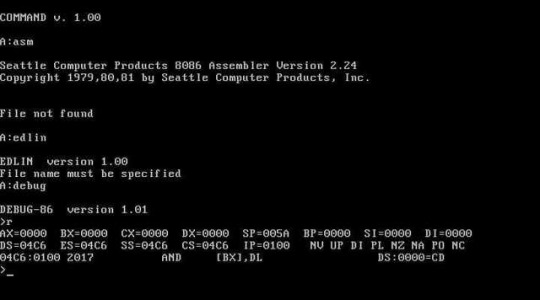
Evening everyone it's been a busy day Dr visit an grocery shopping I'm still under the weather myself meds almost finished so hopefully it will start to get better soon. D.Y.K what happened on 27th July?. . 1981- Microsoft Buys Full Rights to 86-DOS, About two weeks before IBM begins shipping the first IBM PC, Microsoft buys the full rights to the operating system 86-DOS, formerly known as QDOS (Quick and Dirty Operating System), from Seattle Computer Products for $50,000. Microsoft had previously paid $25,000 to SCP for a non-exclusive license in December 1980 in order to begin porting the operating system to the IBM PC, which used the Intel 8088 processor. Microsoft renamed 86-DOS to MS-DOS and licensed it to IBM as PC-DOS. SCP would later sue Microsoft claiming fraud because Microsoft did not reveal IBM as a licensee. The case was settled in SCP’s favor for 1 million dollars, a fraction of the annual revenue Microsoft was receiving from MS-DOS and PC-DOS. . 1993 - Windows NT 3.1 released, Microsoft released another Operating System to focus the business. NT 3.1 was the first release in the NT series. NT stood for “N-Ten,” the codename of the Intel i860 XR processor for which NT was initially developed.The NT kernal was different than the Windows 3.x version. It implemented the Win32 API, or 32 bit programming. Windows NT also was for the business. It didn’t push multimedia like it’s home counterpart. . 1997 Computer Could Have Prevented Murder of Fashion Designer, In an article in the Los Angeles Times, former San Jose Police Chief Joseph McNamara argued that computers could have saved fashion designer Gianni Versace, murdered earlier that summer by Andrew Cunanan. "If the Miami Beach Police Department had computer technology as sophisticated as that used in one of the town's. . . . #TerrierByteIT #Wifeidge #computerhistory #computer #technology #history #computerscience #tech #computerhistorymuseum #computers #retro #vintage #retrotech #trivia #oldtechnology #techhistory #technologyhistory #computinghistory #oldcomputer #oldschool #informationtechnology #thisdayinhistory #internethistory #historyoftechnology #retrocomputer #oldtech #museum #vintagecomputer
#terrierbyteit#computers#computer#historyoftechnology#vintagecomputer#technology#wifeidge#museum#oldtechnology#technologyhistory#oldtech#computerhistory#oldschool#history#oldcomputer#informationtechnology#computerhistorymuseum#trivia#vintage#computinghistory#thisdayinhistory#internethistory#retrotech#retrocomputer#computerscience#tech#techhistory#retro
1 note
·
View note
Photo
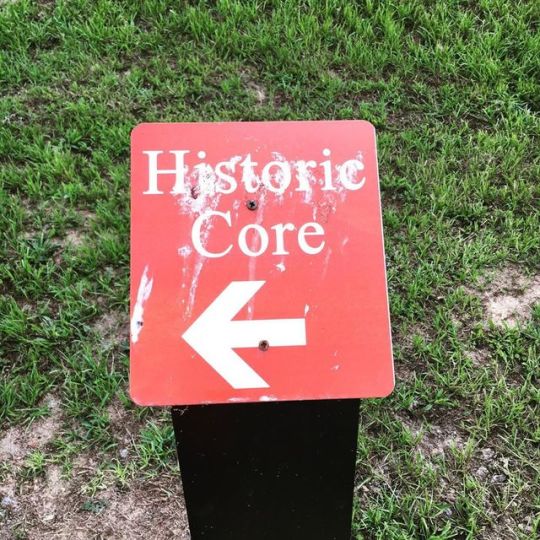
That’s what it’s all about, baby. #history #historyoftechnology https://www.instagram.com/p/BzWOPD-hiR-/?igshid=l21cei6m6rcw
0 notes
Photo
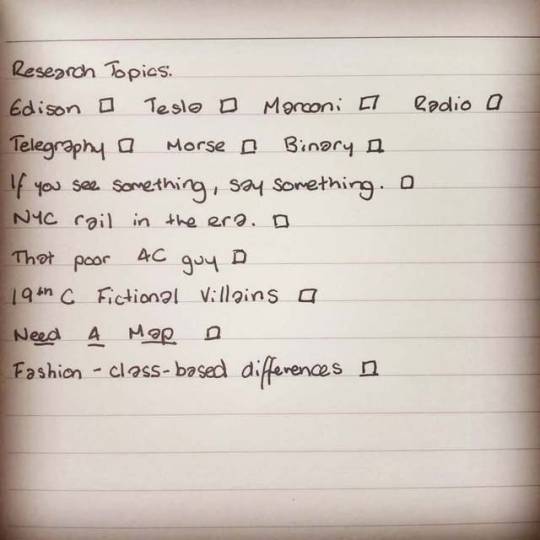
This is going to be a #funday #sundayfunday #research #19thcentury #technology #historyoftechnology #historyofnewyorkcity #sideproject #amwriting #relaxing #comforting #bitoffun #writerscorner #writingcommunity
#technology#historyoftechnology#19thcentury#sideproject#historyofnewyorkcity#comforting#relaxing#sundayfunday#bitoffun#writingcommunity#research#writerscorner#funday#amwriting
1 note
·
View note
Text
Sending letters Vs. Instant messaging via Facebook's messenger.
{Week 2, History of Technology:select a pre-web technology and compare it to one of your favourite websites, apps, or games (e.g. record player vs. Spotify). }
Before the big wide web came about the main mode of communication was through letter writing, picking up a pen or even a quill and taking the time out of your day to write a letter to those you love. A delightful yet time consuming process. However fast forward to today, letter writing is a thing of foreign understanding. The ‘in’ thing: Facebook's messenger. Just a few taps on a screen or keyboard and you are away. No need to wait weeks for a reply, with messenger you gain your reply within minutes or even seconds. Connecting with friends and family halfway around the world has never been so instantaneous. No more planned drafts, stamps, trips to the post box, and waiting around for a reply. No more “snail mail”.
It’s not just the time factor that has changed either, it’s the way we communicate and the language we use, or even lack thereof. We’ve traded in perfect thought out English (or other native language) for one word, one letter replies. Or more recently emoticons, stickers & gifs. No need to articulate your response when you can send a visual representation.
Moreover, it doesn’t stop there since being released in 2011 Facebook’s messenger released updates introducing free voice and video calling. So really the possibilities are endless with messenger and its expanding features. Perhaps one of the only downfalls to today’s mode of communication through messenger is the somewhat lack of passion and sentiment. For to sit down and write a letter one puts true thought in all that they are wanting to share, whereas due to the immediacy of communication nowadays we can forget how important it is to truly connect with one another, than purely to participate in gossip and petty conversation.
0 notes
Photo
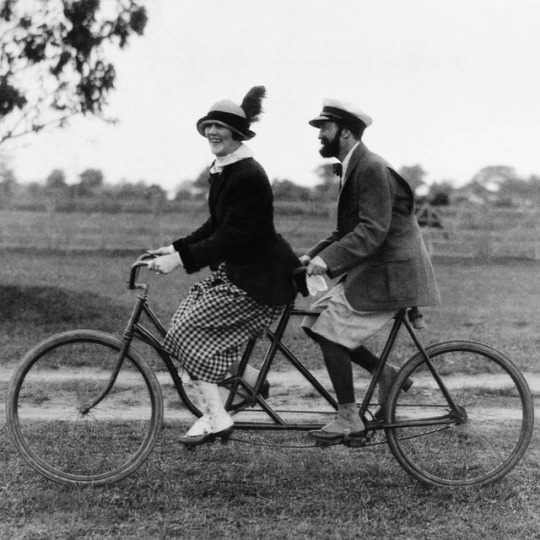
From @1843mag: To 21st-century eyes the bicycle seems unremarkable. But when modern-style “safety” bikes – with pedals, brakes and rubber tyres – first appeared in the 1890s, they were seen as agents of radical social change. Beloved of socialists and suffragettes, bicycles became associated with emancipation and progress. Female cyclists abandoned impractical Victorian clothing for trousers or bloomers. Bikes had an immediate social impact in one area in particular: dating. Cyclists could now travel beyond their own communities, greatly increasing the number of potential marriage partners. In recent years another technology has expanded people’s social circles and dramatically broadened their romantic opportunities: online dating. Like bicycles, apps and websites bring together people who might otherwise not have met, but on a far larger scale. In America more than a third of marriages now start with a digital match-up. To learn more about the similarities between the two revolutionary technologies, hit @1843mag and follow the link in the bio. Image: Getty #bicycles #dating #datingapp #technology #historyoftechnology http://bit.ly/2Gry0At
0 notes
Photo
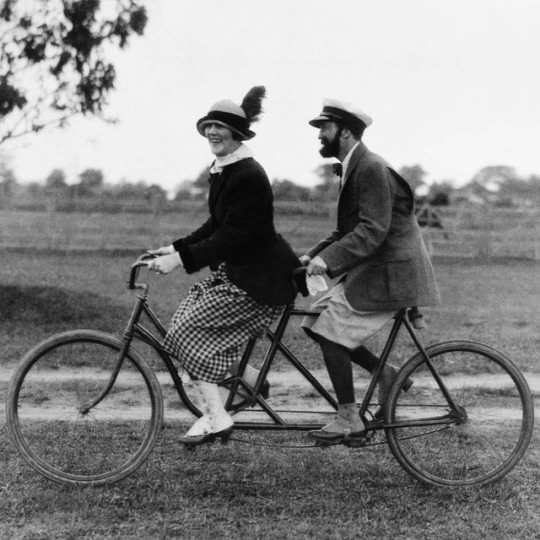
From @1843mag: To 21st-century eyes the bicycle seems unremarkable. But when modern-style “safety” bikes – with pedals, brakes and rubber tyres – first appeared in the 1890s, they were seen as agents of radical social change. Beloved of socialists and suffragettes, bicycles became associated with emancipation and progress. Female cyclists abandoned impractical Victorian clothing for trousers or bloomers. Bikes had an immediate social impact in one area in particular: dating. Cyclists could now travel beyond their own communities, greatly increasing the number of potential marriage partners. In recent years another technology has expanded people’s social circles and dramatically broadened their romantic opportunities: online dating. Like bicycles, apps and websites bring together people who might otherwise not have met, but on a far larger scale. In America more than a third of marriages now start with a digital match-up. To learn more about the similarities between the two revolutionary technologies, hit @1843mag and follow the link in the bio. Image: Getty #bicycles #dating #datingapp #technology #historyoftechnology http://bit.ly/2Gry0At
0 notes
Photo

Could you imagine your life without electricity? 💡 In rural America in the 1930s and 1940s, many people couldn’t imagine their lives with it. Louisan Mamer travelled the country for the Rural Electrification Administration, teaching rural men and women how to use electricity in their daily lives.🔌 Want to know how to choose and use your refrigerator? What could an electric mixer do for you? Mamer was there to help. Her papers are now part of our Archives Center’s rich collections—but if you can’t make it to the archives, you can learn more about Mamer by checking out the link in our bio. #WomensHistory #WomensHistoryMonth #AmericanHistory #BusinessHistory #RuralHistory #HistoryOfTechnology #1930s #1940s #ArchivesAwesomeWomen [Louisan E. Mamer Rural Electrification Administration Papers, Archives Center] http://ift.tt/2F3aCeO
0 notes
Photo
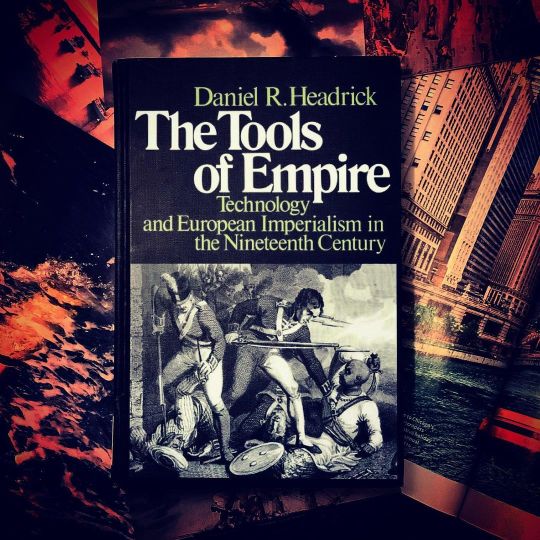
“European empires of the nineteenth century were economy empires, cheaply obtained by taking advantage of new technologies, and, when the cost of keeping them rose a century later, quickly discarded. In the process, they unbalanced world relations, overturned ancient ways of life, and opened the way for a new global civilization.” Daniel Headrick’s 1981 book The Tools of Empire: Technology and European Imperialism in the Nineteenth Century explores the social history of technology connecting what its author considers the two “great events” of the nineteenth century: the colonization of Africa and Asia, and the progress and development of industrial technology. Headrick views nineteenth century imperialism as a result of both appropriate motives and adequate means, and divides the trajectory of its history into the three stages of exploration, conquest, and the forging of communication and transportation networks, and explores the development and role of technologies like guns, quinine, submarine cables, railroads and gunboats and steamships. To me, one of the highlights of the book was the interconnected histories of the collaboration of politics, legislation, technological innovation and capital in the success of the steamship lobby in pushing for investment in gunboats in the British empire that Headrick traces, among other similar narratives pertaining to other technologies. His rejection of the “leading sectors” model through which traditional historiographies used to view the Industrial revolution, and their long disregard of technological factors in imperialist expansion, was also noteworthy. This book sits at the crossroads of the history of technology, economic history and the history of European imperialism, and does a good job of exploring how certain technologies impacted and enabled imperial developments. 4/5 🌟 & full review on #goodreads (link in bio) #danielheadrick #historyoftechnology #hst #historyofscience #colonialism #imperialism #militaryhistory #economichistory #britishempire #19thcentury #nineteenthcentury #history #historylovers #historybooks #academicbooks #bookrecommendations #bookstagram #bookreview #nonfiction #nonfictionbook https://www.instagram.com/p/CRnNIQSLVMd/?utm_medium=tumblr
#goodreads#danielheadrick#historyoftechnology#hst#historyofscience#colonialism#imperialism#militaryhistory#economichistory#britishempire#19thcentury#nineteenthcentury#history#historylovers#historybooks#academicbooks#bookrecommendations#bookstagram#bookreview#nonfiction#nonfictionbook
1 note
·
View note